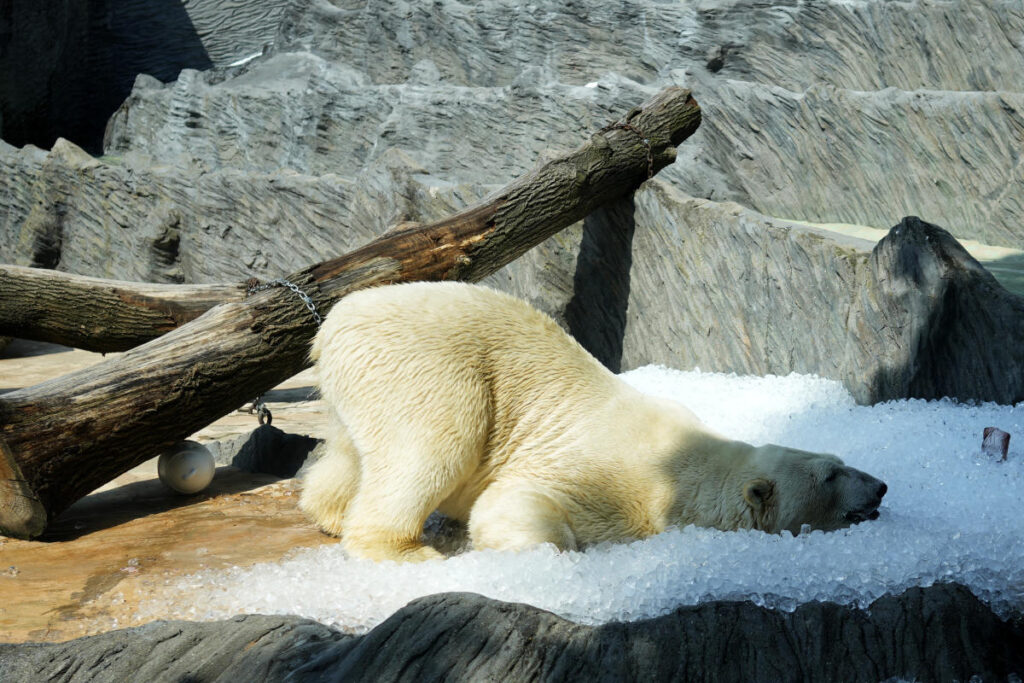BELGRADE, Serbia (AP) — Weather alerts, wildfires, melting urban roads: a scorching heat wave has sent temperatures across parts of Central and Southern Europe soaring to 40 degrees Celsius (104 Fahrenheit) in some places.
From Italy to Romania, authorities warned people to be careful, drive carefully on holiday, drink plenty of water and avoid going outside during the hottest hours of the day.
Italian authorities on Thursday issued a red weather alert in seven cities, mainly in the central parts of the country, but also in the capital Rome and Trieste in the northeast. The heat is exacerbated by humidity and could affect both healthy people and those with health problems, authorities warned.
Similar warnings were issued in neighboring Croatia and further east and south. Croatia’s main tourist resort, the southern Adriatic city of Dubrovnik, registered 28 degrees Celsius (82.4 Fahrenheit) at sunrise, indicating no relief when the sun sets.
This week, forest fires have been reported in Albania, near the border with Greece, as well as in Bosnia and Italy.
Meteorologists reported that temperatures in major cities were even higher than officially reported, with glowing concrete radiating heat above ground and asphalt softening underfoot.
“It was impossible to breathe yesterday,” said Antonela Spičanović, speaking from the Montenegrin capital Podgorica, where temperatures reached 39C (102F) on Wednesday. The city appeared deserted, with many residents staying indoors or heading to the Adriatic Sea coast or the mountains.
“I spend my days in the apartment, under the air conditioning,” said Đorđe Stanišić, an electrical engineer also from Podgorica. “It’s hell outside.”
Mendim Rugova, a meteorologist from neighboring Kosovo, said temperatures in the country had risen an average of 2.5 degrees since the 1980s. He said the current heat wave could last until the end of July.
“We could see temperatures above 40 degrees Celsius in the region, in parts of Albania, North Macedonia, in Greece and also in parts of Serbia,” he predicted.
In the Czech capital Prague, where temperatures rose to 34 degrees Celsius on Wednesday and dropped slightly on Thursday, the city zoo delivered 10 tons of ice to provide much-needed relief for the animals.
The ice was strategically placed around the zoo on Wednesday, creating cool spots where animals could shelter from the unusually high temperatures.
In the Romanian capital Bucharest, street thermometers read 42°C (107°F) on Tuesday and Wednesday, although official readings were a few degrees lower.
Neighbouring Serbia has reported record temperatures so far this summer, with thermostats hitting 35C (95F) in the north of the country on Thursday morning. In the capital Belgrade, doctors reported treating people who had collapsed, felt dizzy or complained of headaches due to the heat.
According to Serbian authorities, the use of air conditioning leads to enormous electricity consumption, comparable to normal consumption in winter, when many people in the Balkan country use electricity for heating.
During an earlier heatwave last month, Montenegro, Bosnia, Croatia and Albania faced a major power outage amid the overload and collapse of a regional distribution line. Earlier this month, a powerful storm After days of heat, the earthquakes tore through the region, killing two people, damaging homes, blowing down trees and flooding streets.
Experts say human-caused climate change wild weather fluctuationsincreasingly unpredictable storms and heat waves.
___
AP writers in the region contributed to this report.

